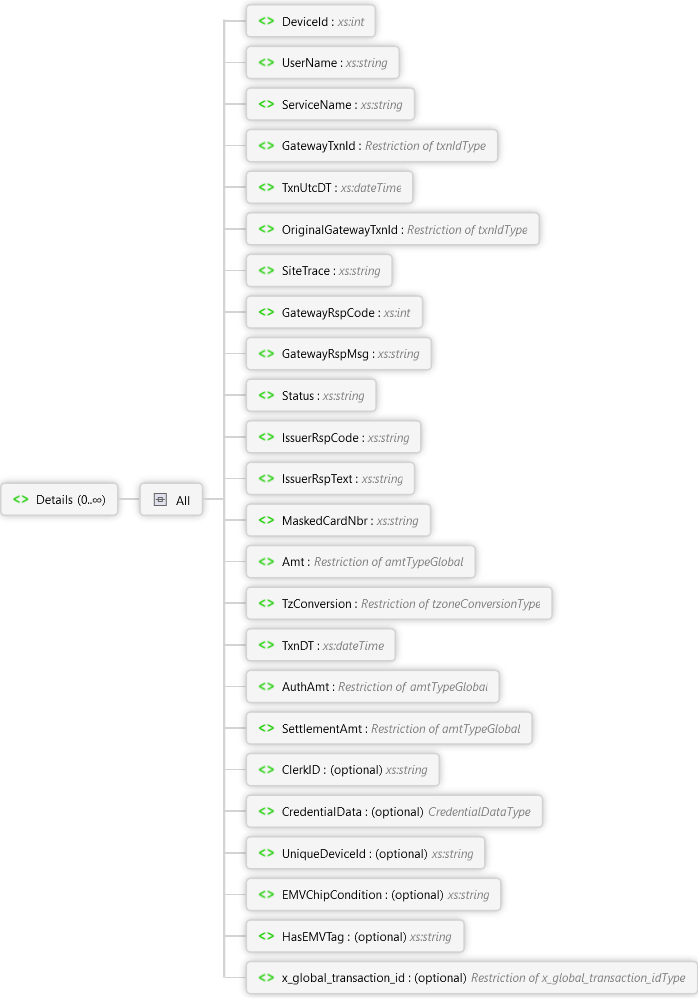Report details sorted by DeviceId, TxnUtcDT
Note: If the data was defined in the request or response, a description has not been added here; only fields that are being introduced in this response have additional detail added. Typically, these will be fields that drive business logic that can be assumed at the time of the transaction or they are calculated at the time of the report.



